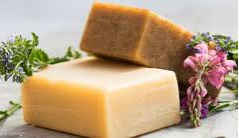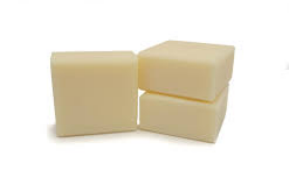
Silicates make soap – grease
The principle of soap’s ability to remove dirt is that after it dissolves in water, its molecules move in water, forming significant surface activated carbon and adsorption properties, wetting between greasy, dirty, and washed clothes. The penetration effect of soap solution is stronger than the adhesion of oily dirt on fabrics, so dirt is squeezed out from the fabric fibers, becoming small droplets, which are emulsified and exist in the solution and cannot be further deposited on the fabric, After scrubbing, it foams, is surrounded by the adsorption layer of soap foam, and is washed away with water and foam.
Therefore, when studying the process formula for producing soap, it is necessary to fully consider the following properties and properties that the product should possess
1) Surface activity, in order to make the soap liquid have good wettability and strong cleaning power
2) Emulsification, which allows water to be mixed with liquids that cannot be mixed with water to form an emulsion, in order to wash greasy dirt
3) Adsorbability, which enables tiny substances such as dust and other particles to be absorbed into soap liquid and foam
4) Foaming properties to lift up dirt
5) Crystallinity makes soap harder and easier to use.
At the same time, it is necessary to understand the various raw materials used to manufacture soap in order to determine the appropriate process formula. The raw materials for soap can be divided into oil, alkali, and other auxiliary materials. There are mainly two kinds of grease for making soap: animal oil and vegetable oil.
Among animal oils, tallow is the superior raw material for making soap. Soaps made with them are hard, white, stable in quality, less soluble in water, strong in detergency, thick and durable in foam, and lard can increase the toughness and luster of soap and improve the quality of soap; The dosage of bone oil in soap is 10%, and using too much soap will not produce good color; Pupa oil needs to be first decomposed into fatty acids, and then refined by distillation. The amount used in soap can account for 10-15%.

Among vegetable oils, skin oil (vegetable oil) and wood oil are the main raw materials for making soap, with a dosage of up to 55%. The amount of cottonseed oil used in soap is generally 15-25%. If the amount is too much, the soap produced has poor performance, is not resistant to storage, and is prone to spoilage. Castor oil has a high solubility, is easy to saponify, and can increase the luster of soap. If used in bathing, it can reduce irritation to the human skin. When combined with other oils, it can produce high-quality soap and soap. Furn oil can only be applied after being decolorized by sulfuric acid and zinc powder, with a dosage of up to 20%. Soybean oil is generally used as the raw material for soap making after being made into hardened oil. The soap made is generally in the shape of soul or light yellow, soft, easy to shrink and deform, high solubility, more foam, strong detergency, but not resistant to preservation. The so-called hardened oil, also known as hydrogenated oil, is a solid oil formed by hydrogenation of liquid fats. It is an important raw material for making soap and can replace solid oil fats. Bran oil, rapeseed oil, and cottonseed oil can all be used to make hardened oil. The amount of 60 degree hardened stain used in soap can reach up to 40%, making the body hard and durable. In addition, synthetic fatty acids are substitutes for natural oils and fats. Currently, they are mainly obtained through oxidation of paraffin as raw material and can be used up to 60% in soap, which can save a lot of natural oils and fats.
Supplier
TRUNNANOÂ is a supplier of sodium silicate with over 12 years experience in nano-building energy conservation and nanotechnology development. It accepts payment via Credit Card, T/T, West Union and Paypal. Trunnano will ship the goods to customers overseas through FedEx, DHL, by air, or by sea. If you are looking for high-quality sodium silicate, please feel free to contact us and send an inquiry.
